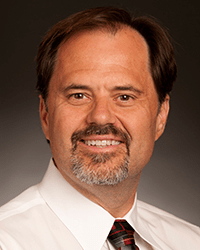CHAMP Study Challenges Medication-Driven Approach to Migraine Care
Published Jan. 12, 2017
The New England Journal of Medicine
To the surprise of many clinicians and investigators, a 31-center clinical trial led by Cincinnati Children’s determined that the two most commonly prescribed medications for preventing migraines in teens are no more effective than placebo.
However, these findings did not mean the drugs and sugar pills had no effect. Instead, they all provided benefit, possibly suggesting that a patient’s expectation of improvement is more powerful than the specific chemicals involved. Such findings, from such a large study, are prompting a deep rethinking of how to best control a common cause of life-disrupting pain that affects more than 6 million youths across the U.S.
Findings from the Childhood and Adolescent Migraine Prevention (CHAMP) study were published Jan. 12, 2017, in The New England Journal of Medicine. Andrew Hershey, MD, PhD, Endowed Chair and Director, Division of Neurology, and Scott Powers, PhD, Endowed Chair and Co-Director of the Headache Center at Cincinnati Children’s, served as the primary investigators.
The study tracked over 300 patients across 24 weeks. Cincinnati Children’s served as the clinical coordinating center, while the University of Iowa provided independent data coordination.
The study launched in 2012 after nearly three years of planning and proposals to secure a $15 million grant from the National Institutes of Health. The clinical trial ended prior to full enrollment once the data revealed no clear statistical benefit to the medications over placebo.
Unexpected Findings
The study was designed to tease out which one of the medications would stand out the most, either in achieving better headache control, or by producing fewer side effects. However, the study found that 55 percent of those taking topiramate had headache frequency drop at least by half, compared to 52 percent of those taking amitriptyline and 61 percent of those on a placebo. None of these differences were statistically significant.
In addition to a lack of superior effectiveness, both drugs showed side effects that did not occur among the placebo group. Topiramate did stand out on this front, in a negative way. It was associated with more side effects than amitriptyline, including small numbers of children experiencing slowed thinking and about one-third of patients feeling paresthesia—a “pins and needles” tingling in the hands, arms, legs or feet.
“We were hoping to provide evidence that primary care physicians could use to help more kids by pointing to something safe and well-tolerated that could work in a relatively short period of time,” Powers says. “We wanted to be able to say, ‘Start with this.'”
“Instead,” Hershey says, “we showed that it’s probably more important to see a multidisciplinary team that includes specialists in headache management.”
Rethinking Migraine Care
Another intriguing aspect of the CHAMP study: the headache control benefits reported by patients began only after treatment began, be it with medication or a placebo. No improvements occurred during a 28-day baseline period between the initial appointment and receiving a test medication. During that baseline period patients had received a standardized evaluation, diagnoses, an acute treatment plan and healthy lifestyle recommendations. Also, the reported benefits continued even after patients were taken off their study medication.
Overall, the CHAMP findings augment a previous study led by Cincinnati Children’s (published in December 2013 in JAMA) that found higher success rates for controlling chronic migraine when children participate in cognitive behavior therapy and received amitriptyline compared to receiving the medication alone.
Now, Cincinnati Children’s is changing its practices based on the new information.
“We have expanded our discussion of the available options. We use medications less often as a first-line intervention, and we offer them in a more-sequential fashion. Meanwhile, we are increasing our referrals for outpatient cognitive behavioral therapy,” Powers says. “Now, when we talk to families about treatment options, it is more of an informed consent discussion. We say, ‘This is what we’ve learned so far. How would you like to proceed?'”
To further support the approach, the Division of Neurology increased its new visit availability by 35 percent. The Division of Behavioral Medicine and Clinical Psychology has begun hiring more cognitive behavioral therapists.
However, the study authors say not every medical center is well positioned to make such changes.
“The good news is we can help children with migraines get better,” Powers says. “Unfortunately, there are not enough child neurologists nor child psychologists in the country to see all the children who have migraines.”
To help, Cincinnati Children’s is disseminating these findings to the field, evaluating concepts for making effective care more widely accessible, and striving to train the next generation of headache care providers. Meanwhile, the authors continue to study which migraine treatments work best, and why.







